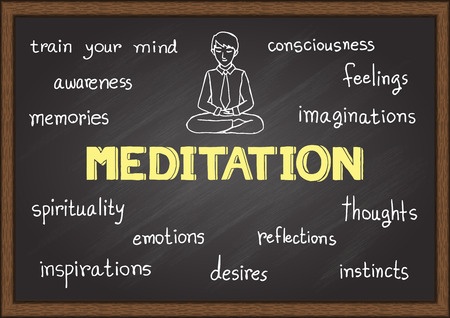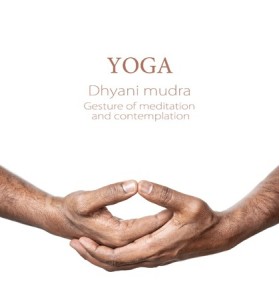
Meditation is currently a popular topic in today’s digital world. There seems to be an endless supply of articles, techniques, and schools to teach it, which has unfortunately created the illusion that it is something that is difficult to learn, time consuming, and impossible to master. None of this is true. Not only is meditation simple, but it is a natural born ability of every living being; one that offers more benefits, and takes less time, than anything else you can do. So why aren’t you practicing?
Meditation 101
What is meditation? Well, to answer that exactly can be tricky because there are probably as many ways to define meditation as there are to practice it. But to lend a general understanding to the readers of this article, let’s define it simply and say that it is an internal practice for seeking the source of the self. However, you may discover your own definition of meditation through your experience of it. So instead I will discuss what meditation is not, and offer you tips to begin your own practice. That is a much easier task.
Meditat ion is not the attempt to try and control or stop your thoughts. In fact, trying to meditate in any way is not meditating at all; it is reacting. This makes it no different than your normal awareness, thus defeating the purpose. You live in a state of constant reaction in your waking life, and meditation is the only conscious vehicle with which to escape it. So to meditate you don’t want to try, you want to accept. The act of trying closes you off to the experience and keeps you in an active state of effort, while a passive acceptance will open you to the experience and relax you into a state of receptivity.
ion is not the attempt to try and control or stop your thoughts. In fact, trying to meditate in any way is not meditating at all; it is reacting. This makes it no different than your normal awareness, thus defeating the purpose. You live in a state of constant reaction in your waking life, and meditation is the only conscious vehicle with which to escape it. So to meditate you don’t want to try, you want to accept. The act of trying closes you off to the experience and keeps you in an active state of effort, while a passive acceptance will open you to the experience and relax you into a state of receptivity.
When you allow yourself a state of silent receptivity, you are in acceptance of what is and you become what you are…eternal, open, unlimited and aware. This is far more pleasant that the confinement and ceaseless torment of your normal, thinking existence. It is a respite, a vacation from your mind. You need it.
You are already this, the awareness of all that is, but the veil of the physical world has cloaked your consciousness and made it hard to distinguish your crystal clarity from all of its distractions; such as the physical world, your thoughts and emotions. Your awareness is beyond all of it. You are beyond all of it. The realization of this is what meditation can deliver.
Why Meditate?
Some of the many benefits of a regular meditation practice are:
- Less stress
- Improved sleep patterns
- Lower blood pressure, heart rate and respiration rate
- Boosts immunity
- Improved emotional stability
- Improved brain functioning
- Promotes peace and well-being
- Improved mental clarity
- Deeper relaxation
How to Meditate
So, how do you meditate? Well, it’s not complicated. You merely act as awareness and watch; it’s that plain and that simple. You become the witness to whatever arises. You see it, you accept it, and you love it. That is it.
To help you understand further, let’s compare meditation to watching television. Your everyday awareness is you, watching TV. Images and sound continually bombard you with information, totally capturing your awareness and putting you into a hypnotic trance that becomes very difficult to break. This is no different than waking life. Until you take a break from a focus on the physical world, you will remain in its hold – bound to it, confined by it, and therefore trapped in a limited potential. But you are truly a limitless being. Your consciousness is only bound by your small attention span. So to change this, you meditate.
When you meditate, you close your physical eyes and look out the other side of your eyeballs, so to speak, placing your focus inwards. This turns your screen of awareness black…at least at first. Meditation is like you when you are staring at a television that seems to be turned-off, but yet you watch anyway. You watch, you listen, and you observe, until you eventually forget that you are watching, and even that there is difference between the television and you.
While meditating, you want to get lost into the abyss of the black screen of your inner mind – yet it won’t always be black. It may show you things, it may tell you things, it may take you for a ride, but you’ll never find out if you do not let go, allow, and observe. In meditation, you are allowing yourself the chance to see what else the screen has in store for you. The whole universe is there, inside of you, with unlimited channels to explore, discoveries to make, and ways to experience the essence of being. You can bet it has much more exciting content than anything on actual television. So, why not take a look for yourself?
To begin, do this:
Choose a time and place where you will not be interrupted. In the beginning, start with 10 minutes of meditation time. If eventually 10 minutes does not feel long enough, you can always add more time later.
Make sure to find a comfortable spot to practice. Sit in a chair or sit cross-legged on the floor. If you do sit in a chair, keep both feet flat on the ground. Do not lie on your back, unless you have to, as this will make it too easy to fall asleep. You want to stay consciously aware for the experience.
Keep your spine straight. This is imperative to the success of meditation, as the spine is the central channel for not only your physical nervous system, but for your energy field as well. Make sure to keep your chin tucked in slightly to straighten the back of the neck.
Hands are in your lap, palms facing up. You can also choose a mudra (Hand position) to facilitate the flow of energy.
Close your eyes, breathe easy but deep, and allow yourself to unwind. It may help if you smile, as this relaxes you and adds a peaceful quality to your focus. Take a few moments to allow a placid state of being to take over.
Now choose a point of focus for your mind. You want to engage the thinking part of your awareness in a task to keep it busy, while you allow the witnessing part of your awareness a window of opportunity to take the lead. For beginners, the breath is a good place to start. Watch your breathing with a gentle focus as your breath enters and exists your body. When your mind wanders, return to consciously watching the breath. Don’t force the breath, just let it be. For many, this practice is all you need to meditate.
If watching the breath is not working for you, choose a mantra to focus on instead. The mantra “I am” is a very powerful tool. In fact, it’s the only one that many schools of meditation use as their singular focus, leading a few to enlightenment. You can also ask, “Who am I?” as your mantra. You are not waiting to receive and answer, but instead are seeking to explore the source of the question. This one can create amazing experiences if given the chance.
An alternative is to make your own mantra, according to what you are personally working on, such as peace, abundance, strength, or any other of your choosing. Just make sure that whatever you choose, it does not carry an emotional or physical attachment, or it will likely pull you out of focus. Keep your mantra lofty and of a high integrity.

Observing the Self
As your thinking mind is engaged with your point of focus, be the observer. Watch the images that come into your mind while keeping your focus inward. As each image pops up, acknowledge it, but do not allow it to grab your focus. See it and release it.
Notice how you can watch your breathing, or repeat your mantra, while simultaneously being aware that you are doing so. Practice switching your focus between the two aspects of mind; the thinking and the witnessing. The more you are able to switch into the witness, the more you loosen the binds of the thinker.
Keep Going!
You may get frustrated if random thinking takes over and you lose focus. Know that this happens to every single person that begins the process of learning to meditate. Don’t panic! You cannot fight the mind to fix this. The way through is to go back to your focus again and again, every time you catch your mind wandering elsewhere. If you have to do it 50, 100 or 1,000 times, it does not matter. This is about letting go and allowing the witnessing of the experience. There is no room for the concept of perfection in meditation, so don’t worry – you cannot do it wrong. Just keep going!
A regular practice, a strong intent to carry-on, and a great deal of self-acceptance will train you to let go of reaction, to stop the incessant activity of an unfocused mind, and to operate in an ever-open state of acceptance. And therein lies the discipline of meditation. If you make this a daily practice, you will soon enjoy the many, healthy benefits meditation offers. Enjoy the ride!
Unauthorized use and/or duplication of this material without express and written permission from this site’s author and/or owner is strictly prohibited. Excerpts and links may be used, provided that full and clear credit is given to Mechanics of Being with appropriate and specific direction to the original content.
